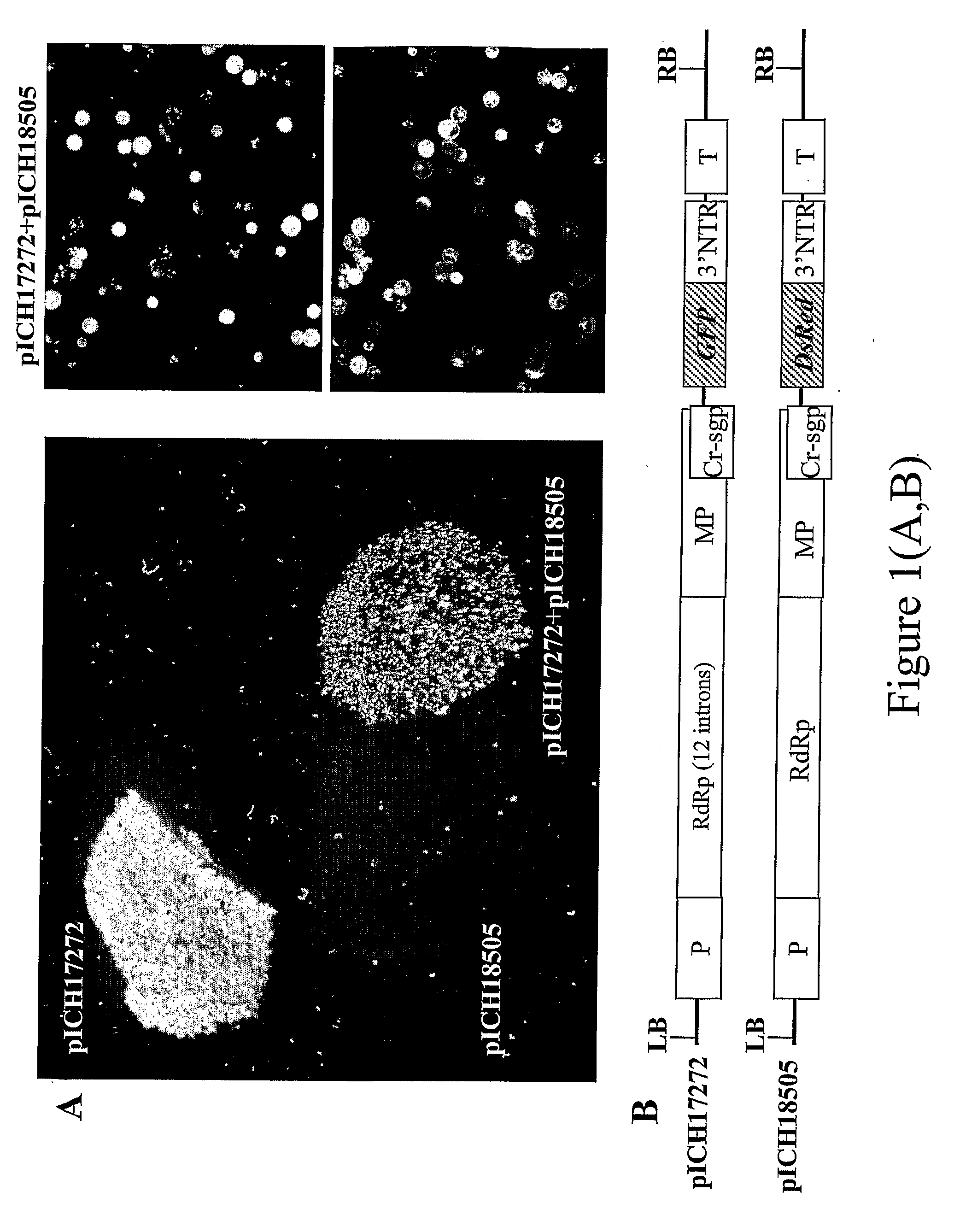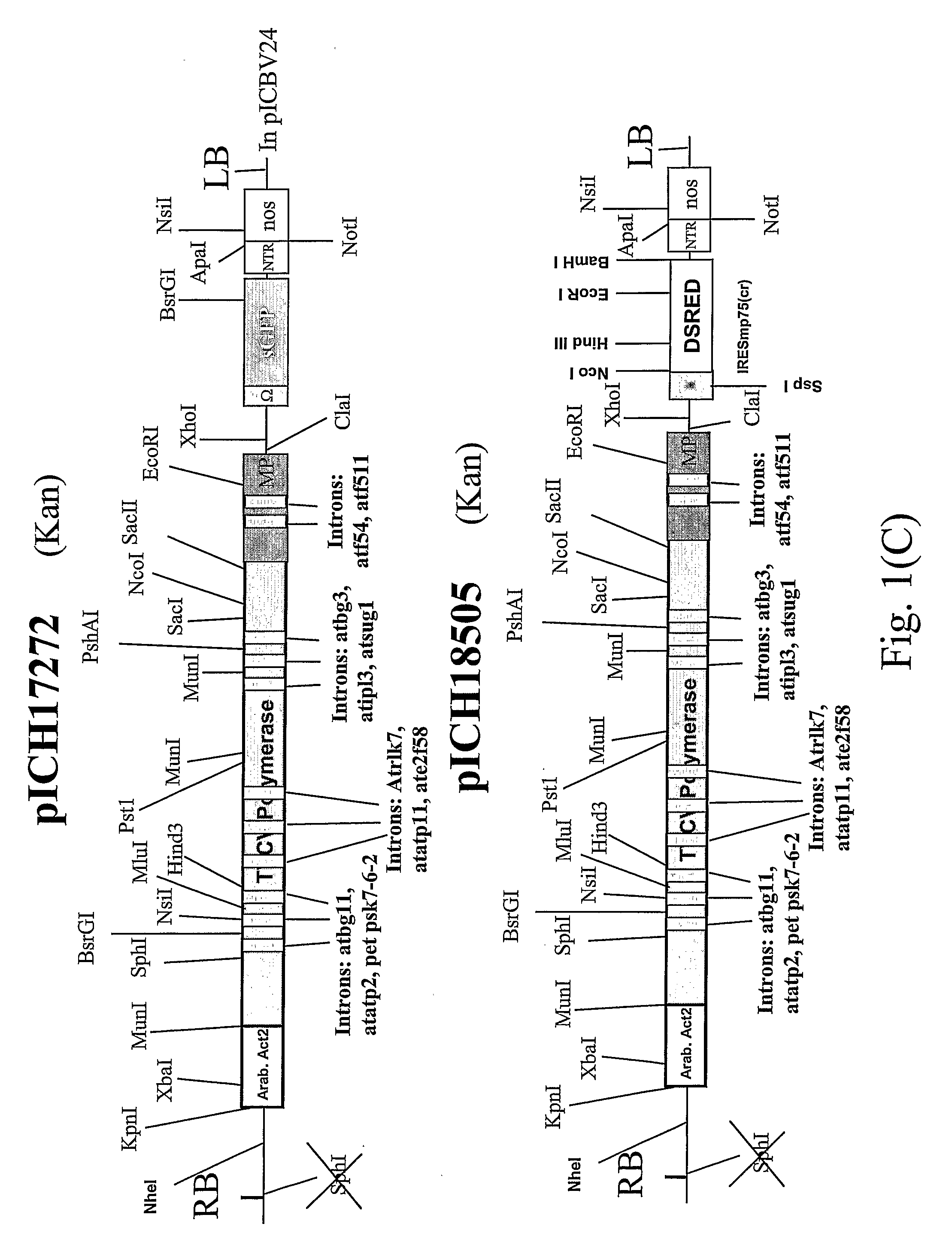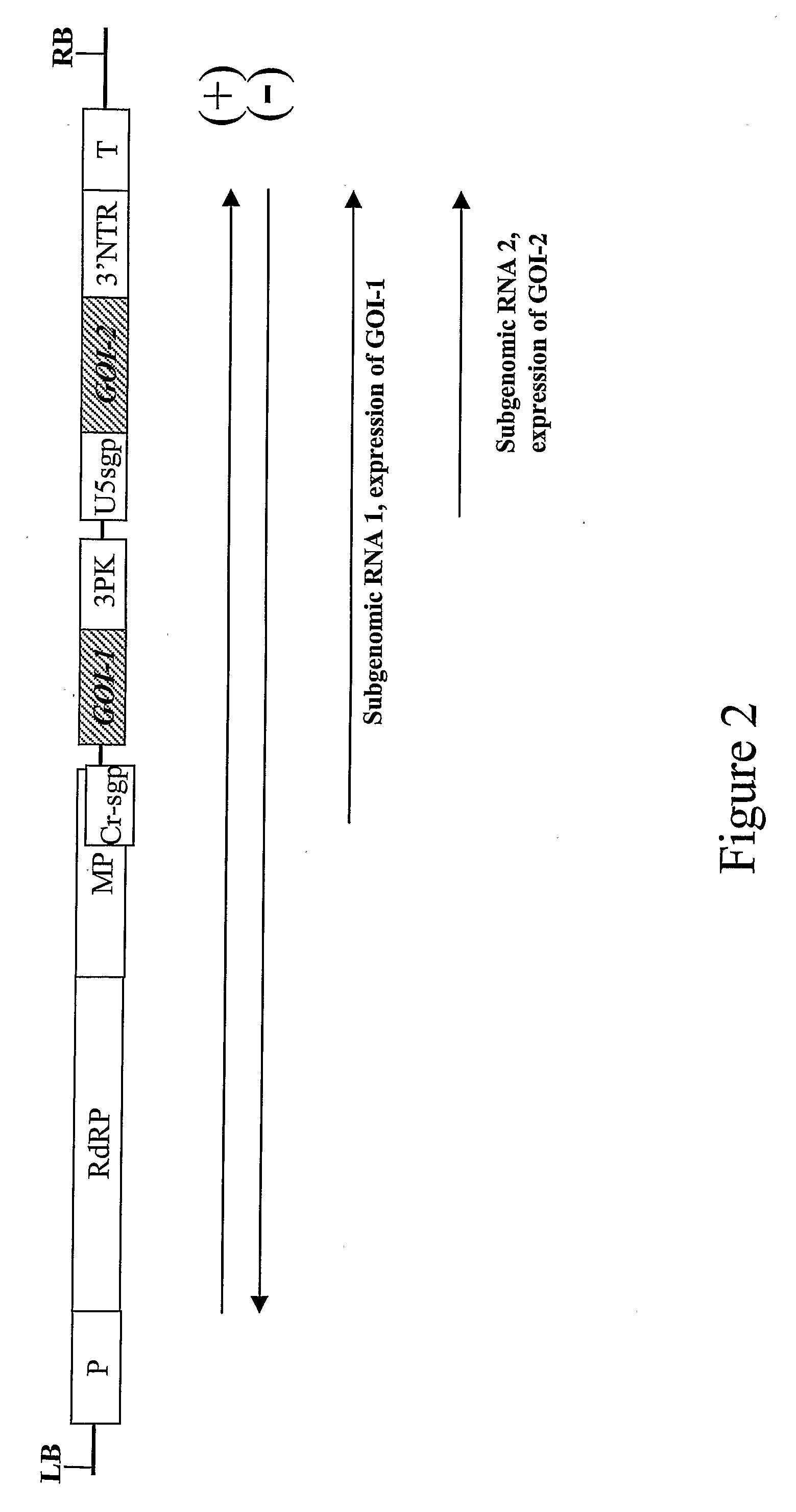Production of hetero-oligomeric proteins in plants
a technology of heterooligomeric proteins and plants, applied in the field of production of heterooligomeric proteins, can solve the problems of compromising yield, high yield of heterooligomeric proteins in plant cells, and system failure to be commercially viable, and achieve the effect of improving the efficiency of the transfer of viral vectors
- Summary
- Abstract
- Description
- Claims
- Application Information
AI Technical Summary
Benefits of technology
Problems solved by technology
Method used
Image
Examples
example 1
Lack of Co-Expression of GFP and DsRed from two TMV-Based RNA Viral Vectors that are Derived from the Same Plant RNA Virus
[0098]Leaf tissue was infected with two TMV-based viral vectors derived from the same plant RNA virus but containing two different genes of interest (FIG. 1). We tested this approach using the visual marker genes GFP and DsRed cloned into a TMV-based viral vector. The first construct, pICH17272 (see FIG. 1 of Marillonnet et al., 2005, Nat. Biotechnol., 23, 718-723), contains GFP, and is similar to pICH18711 (see International patent application PCT / EP03 / 12530, published as WO2005049839; Marillonnet et al., 2005, Nat Biotechnol., 23, 718-723) with the exception that the RdRP coding sequence in the vector contains 9 plants introns rather than 14. The pICH18722 (Marillonnet et al., 2005, Nat. Biotechnol, 23, 718-723) is built on the backbone of two closely related strains of TMV, Cr-TMV (Dorokhov et al. 1994, FEBS Lett 350, 5-8) and TVCV (Lartey et al., 1994, Arch. ...
example 2
Co-Expression of GFP and DsRed from a Single Viral Replicon
[0099]Two genes of interest were expressed from an RNA viral vector, under control of two separate subgenomic promoters (FIG. 2). Both subgenomic promoters can be identical, but to avoid the risk of deletion between repeated sequences in the construct during viral replication, it is preferred to use subgenomic promoters from related TMV strains; in this case, the second subgenomic promoter and 3′ non-translated region comes from TMGMV strain U5 (Shivprasad et al, 1999, Virology, 255, 312-323; Marillonnet et al., 2004, Proc. Natl. Acad. Sci. USA, 101, 6852-6857). Also, for convenience of cloning, GFP and DsRed were cloned in viral provectors (described in WO02 / 088369 and by Marillonnet et al. 2004, Proc. Natl. Acad. Sci. USA, 101, 6852-6857), rather than in a complete assembled vector. The two provectors, pICH17388 and pICH15933 (FIG. 3), were converted to a fully functional TMV-based viral vector by site-specific recombinati...
example 3
Expression of an Antibody from a Single Viral Replicon
[0101]The coding sequences of GFP and DsRed in pICH15933 were replaced by the IgG antibody light and heavy chains, respectively, resulting in construct pICH20241 (FIG. 5). As a control, the heavy and light chains were cloned in a TMV-based provector, replacing the coding sequence of pICH1740, resulting in constructs pICH20421 and pICH20431 (FIG. 5). The pICH20241 was coinfiltrated in Nicotiana benthamiana leaves together with pICH17388 and pICH10881 (FIG. 3).
[0102]Western blot analysis of total soluble protein extracted from infiltrated leaves was performed with 1:6000 diluted anti-human IgG rabbit antibodies labelled with horseradish peroxidase (HRP) (Sigma). The results of the analysis are shown in FIG. 6 A. It is evident that the expression level of an antibody achieved with the help of a single viral vector (lanes 6 & 7, FIG. 6) is significantly higher than that achieved with the help of a strong constitutive promoter even in...
PUM
| Property | Measurement | Unit |
|---|---|---|
| size | aaaaa | aaaaa |
| frequency | aaaaa | aaaaa |
| structure | aaaaa | aaaaa |
Abstract
Description
Claims
Application Information
 Login to View More
Login to View More - R&D
- Intellectual Property
- Life Sciences
- Materials
- Tech Scout
- Unparalleled Data Quality
- Higher Quality Content
- 60% Fewer Hallucinations
Browse by: Latest US Patents, China's latest patents, Technical Efficacy Thesaurus, Application Domain, Technology Topic, Popular Technical Reports.
© 2025 PatSnap. All rights reserved.Legal|Privacy policy|Modern Slavery Act Transparency Statement|Sitemap|About US| Contact US: help@patsnap.com



